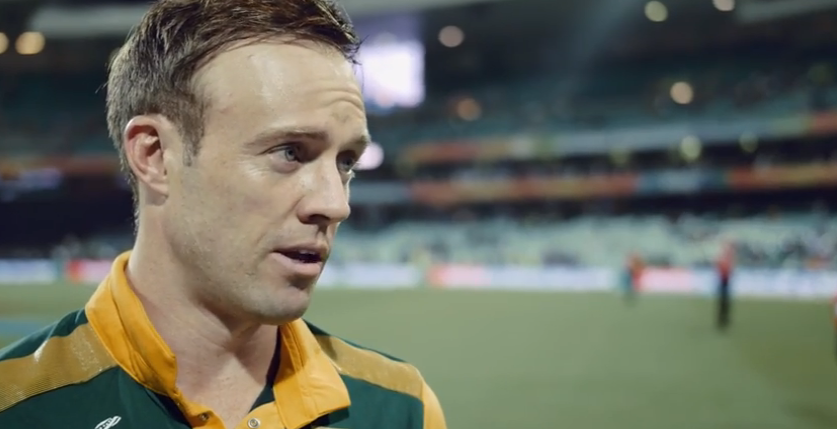If South Africa are to win this World Cup, they will have succeeded in transforming a weakness into a strength.
Consider how the Proteas fared at the last World Cup tournament in India. They went into the quarter-final in Dhaka as favourites, and limited New Zealand to just 221-8 in the allotted 50 overs. South Africa started their innings well, and were cruising at 108-2 after 24 overs.
Then they lost Jacques Kallis, JP Duminy, and AB de Villiers in the space of four overs. The Kiwis applied the squeeze, and targeted the South Africans’ weak spot, namely their temperament. Many words would be used to describe the Proteas’ implosion in the aftermath, but the stats painted the most poignant and damning picture. South Africa lost their last eight wickets for 64 runs.
So why is this relevant now, after such an emphatic performance and result against Sri Lanka in the 2015 World Cup quarter-final? Well, for starters, it’s important to remember how low the Proteas were at the start of this four-year cycle. It’s also significant to note that many of the players who featured in that 2011 campaign are still with the side today. How much have these players learned and grown since the 2011 debacle? The answer will be revealed over the next few days.
In big matches, South Africa have so often found themselves on the wrong side of pressure. This is something Gary Kirsten sought to change when he took over as head coach in 2011. Kirsten challenged the thinking of the senior core, and forced them them to revise their understanding of pressure. By the end of 2012, the Proteas’ Test side had won series in England and Australia, and were the No 1 team in the world.
When Kirsten was coach, he used to speak about managing pressure. He encouraged his players to embrace pressure before a big contest. On the field, he said the players should not lose heart when the opposition was on top. He said that the truly great teams were able to absorb that pressure. Subsequently, they turned the tables, and pressured the opposition.
Neither Kirsten nor his successor Russell Domingo have ever been concerned about the talent at South Africa’s disposal. This country boasts some of the modern greats, many of whom are still excelling for the Test and ODI sides. The question that has persisted for more than 20 years is whether South Africa will ever complement their physical skill with an iron temperament. Kirsten and Domingo have worked hard to develop the latter between the years of 2011 and 2015.
A measure of their faith in the players is best illustrated by the fact that seven survived the 2011 debacle to play in the 2015 quarter-final against Sri Lanka. De Villiers, Hashim Amla, Dale Steyn, Faf du Plessis, Duminy, Morné Morkel and Imran Tahir are evidently more comfortable with the pressure now than they were back in 2011.
They ticked a big box in Sydney, but they will know that a greater challenge awaits in the semi-final, and in a possible final. You could say they were under pressure to end a 23-year losing streak in knockout matches. However, when it came to the actual contest, South Africa had it relatively easy. They were dominant from start to finish. Sri Lanka never put them under pressure
The next two rounds will reveal how much South Africa have learned about pressure management over the past four years. I expect that they will play New Zealand in Auckland next Tuesday. If they manage to beat the Kiwis, they should play one of Australia or India in the final at the MCG.
The semi-final will be a rematch of sorts. The Proteas will be looking to exact some revenge after what transpired in 2011. New Zealand played a fierce, unapologetic brand of cricket in that quarter-final. They got in the South Africans faces, a tactic that worked all too well. Those who would argue need only revisit the stat of eight wickets for 64 runs. A angry, panicked, and ultimately overemotional Proteas outfit were no match for the street smart Kiwis on that occasion.
Should they negotiate the challenge and progress to the final, they may need to find another mental gear. Imagine you’re the opposition of India or Australia, playing in front of 100,000 partisan fans at the MCG. The Proteas will need to deal with this oppressive atmosphere as well as the pressure exerted by their opponents.
The Proteas should feel good about the fact that they’ve buried their play-off bogey. At the same time, they should know that they have everything to prove. De Villiers said at the start of the tournament that this Proteas side is the best in the world, a statement that looked a bit silly after South Africa were hammered by India and then rolled by Pakistan. When teams have put them under pressure, South Africa have not coped well.
And still, there’s reason to believe that they have the capacity to perform under pressure. We’ve seen some encouraging performances by the Proteas over the past four years, particularly on the Test stage. Who could forget the big wins in England and Australia, where their senior players showed tremendous mettle to pull them through.
Amla, De Villiers, Steyn, Morkel, Du Plessis, Duminy… these are the names that have been linked to some notable five-day achievements over the past four years. These are names that have been synonymous with the phrase courage under fire.
The Proteas need these senior players to master the pressure in the semi-final on Tuesday. If they go one better and beat either India or Australia in a final at the MCG, it would make for a truly remarkable comeback story. Four years ago, South Africa’s mental temperament was their Achilles heel. If they prevail in the next two games, then nobody can deny that they have turned that weakness into a strength.







